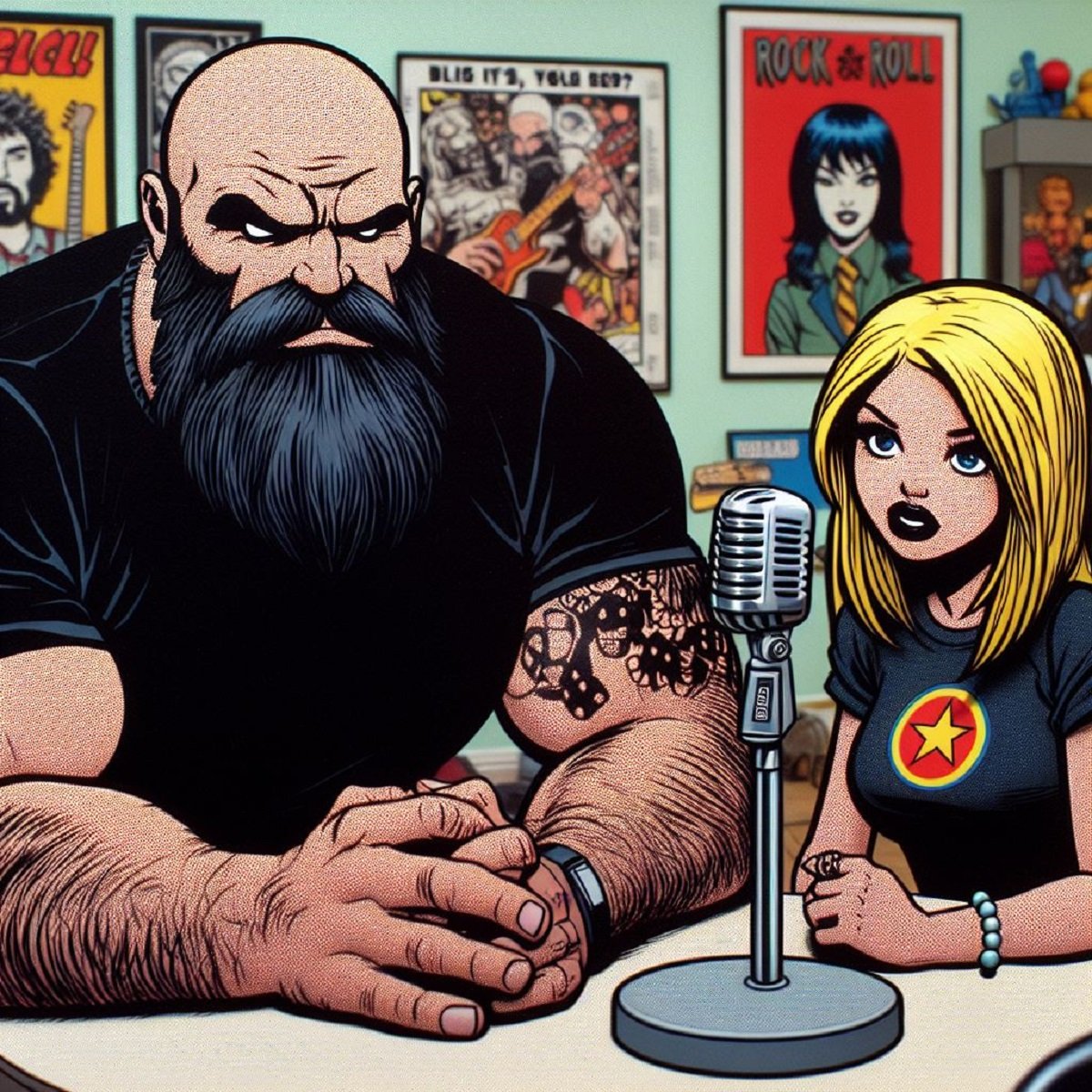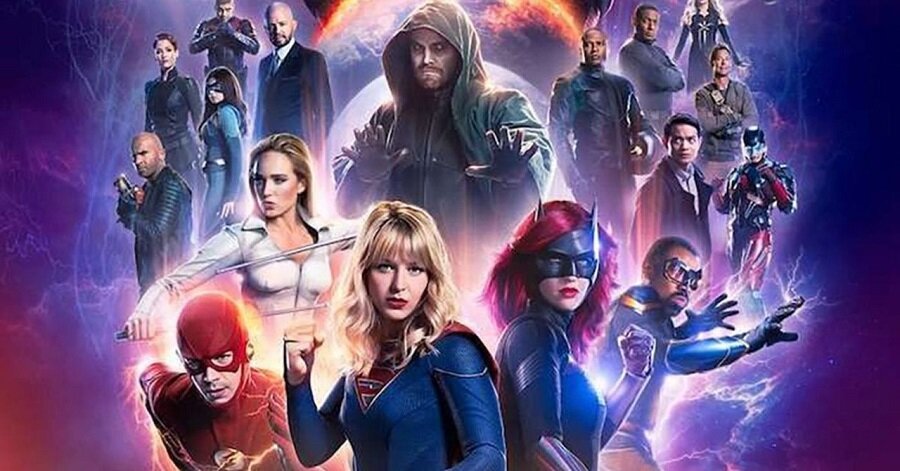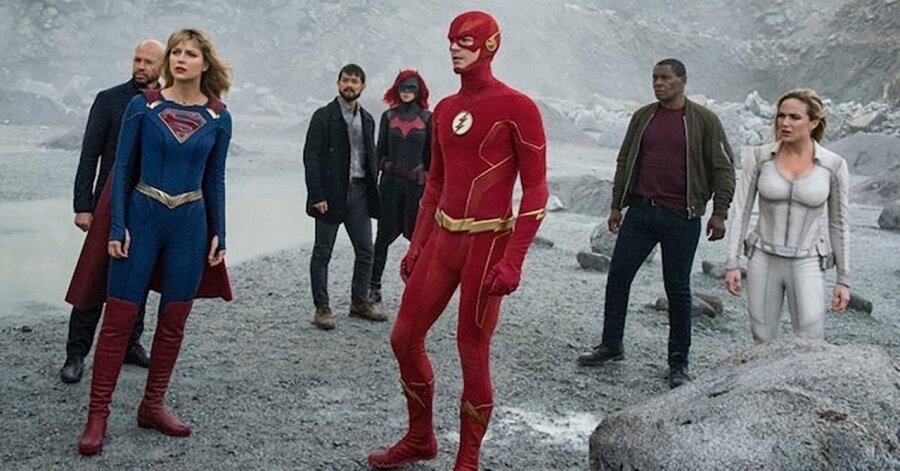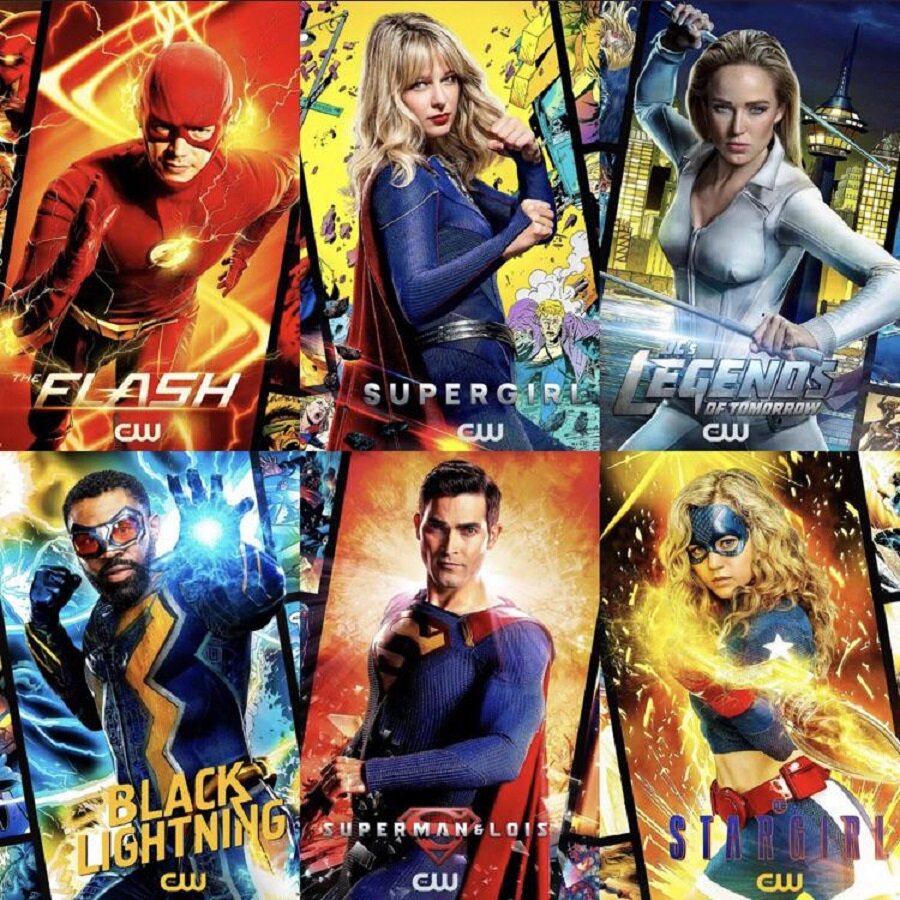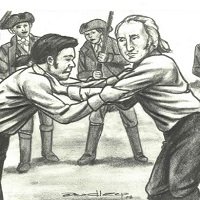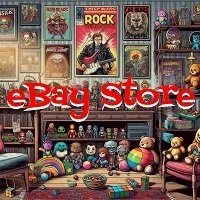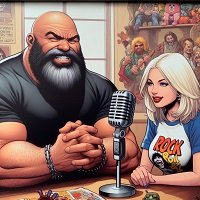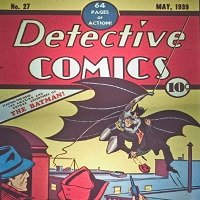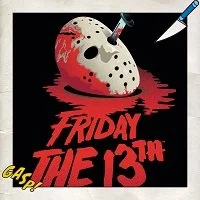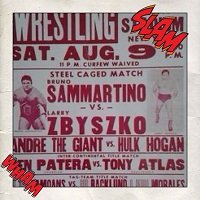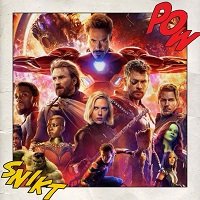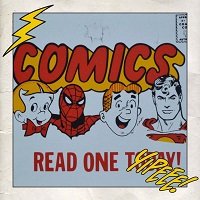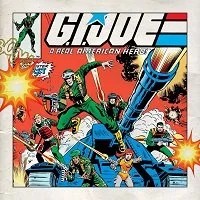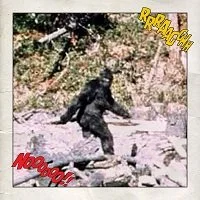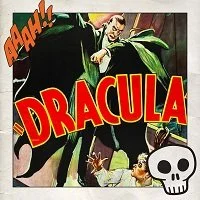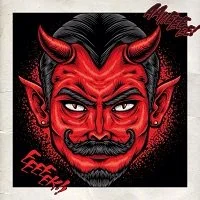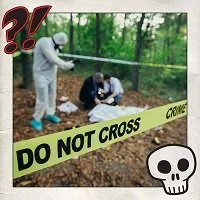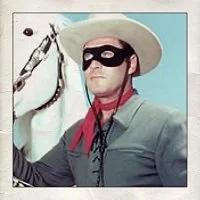It's All Connected. How the Arrowverse Fulfilled the Promise of the MCU for DC
By: Andrew Cohen (Special to When It Was Cool)
When you hear the phrase "It's all connected" you think about the MCU aka the Marvel Cinematic Universe, Marvel's movie and TV franchise that promised to connect all the properties launched by Marvel Studios into a cohesive whole.
While the movies all clearly take place in the same universe, until Disney Plus the Marvel TV shows were allowed to reference the movies, but you never really saw the movies reference anything from the TV shows. The one exception being Edwin Jarvis from Marvel's Agent Carter appearing in Avengers Endgame.
On the other hand, DC has been licensing out their characters for cartoons, serials, movies, and TV shows since the 1940s and while there was internal continuity in those properties, until the DCEU, aka the DC Extended Universe, and the Arrowverse (now referred to as the CWverse since the show Arrow ended) came along in the 21st century, there was never any continuity between properties.
The Arrowverse actually began before the DCEU, but was treated as the red headed stepchild of DC's media properties for a long time, because showrunners were continually told they couldn't use certain DC characters because they were earmarked for the DCEU. Thanks to the Crisis On Infinite Earths crossover in late 2019/early 2020, DC's properties are all tied together in an extended multiverse. It's interesting how they managed to pull it off, but in order to understand how, a short history of the Arrowverse is needed.
What would become the Arrowverse started with the TV show Arrow which debuted in 2012 on the CW. Watching that first season you wouldn't think that we would have comic book TV shows on several days a week. The title character Oliver Queen was called the Hood instead of Green Arrow, and he lived in Starling City, not Star City. The main villain of season one was Malcolm Merlyn, named for a minor character from Justice League of America #94 in 1971.
In season two, Oliver takes on a new alias as the Arrow, and in the 8th episode we would see the debut of Barry Allen, a CSI from Central City, before he becomes the Flash. This episode serves as a backdoor pilot to the 2nd Arrowverse show, the Flash which debuted in 2014. The backstory of the Flash borrows heavily from the Flash Rebirth series as the Reverse Flash goes back in time to kill Barry Allen's mother and future Flash goes back to try unsuccessfully to stop him, and Barry's father winds up in jail for the murder. But Reverse Flash changing history resulted in him losing his speed, so ironically he has to create the circumstances that cause Barry Allen to become the Flash in the first place in order for him to get his own speed back. We also get the first tease of Crisis on Infinite Earths, with a future newspaper showing that the Flash would disappear during a time of red skies in 2024.
That year, characters from Arrow and Flash crossed over with a two-parter that started with Flash episode "Flash vs. Arrow" and concluded with Arrow episode "The Brave and the Bold" in what would become an annual tradition until Arrow's final season.
In 2015, the failed 2014 NBC series Constantine is brought into Arrowverse continuity when Matt Ryan appears on Arrow as John Constantine. The worldbuilding continued in Flash season 2, as we are introduced to the multiverse. The main villain for season 2 was the evil speedster Zoom from Earth 2. In episode 13 when Flash travels over to Earth 2 we see some flashes (pun intended) of characters from other parallel earths such as the 1990s Flash and the new CBS character Supergirl.
That same year, 2015, Supergirl had debuted on CBS, and since it was on a different network, her world was established to be a different Earth, which we would later learn would be named Earth 38 (after Superman debuting in comics in 1938). In episode 18, "Worlds Finest" the Flash guest stars due to events loosely tied to Flash season 2 episode "Versus Zoom". Flash is trying to increase his speed and as a result accidentally winds up on Supergirl's Earth. Supergirl the show winds up being cancelled by CBS but is picked up by the CW.
Also in 2015, the second Flash/Arrow crossover took place in a story that introduced Hawkman, Hawkgirl, and Vandal Savage in a two-parter starting with Flash episode "Legends of Today" and ending with Arrow episode "Legends of Yesterday" which lead to the next Arrowverse show DC's Legends of Tomorrow which focuses on time travel.
2016 saw two crossover events. Arrow, Flash, and Legends of Tomorrow crossed over in a 3 night "Invasion" event loosely based on the Invasion miniseries of the 1980s. While Supergirl the character appears in the event there there is only a brief appearance by Flash and Cisco Ramon at the end of Supergirl episode "Medusa" tying it together. The second crossover is between Supergirl and Flash. The end of Supergirl episode "Star-Crossed" leads to musical Flash episode "Duet", when J'onn J'onzz and Mon-El bring a comatose Supergirl to Earth 1 for help.
2017's crossover event carried across all four shows as "Crisis on Earth X", where they face Nazi versions of the heroes. 2018's crossover event was called "Elseworlds" and ran between Arrow, Flash, and Supergirl, and introduced Batwoman and Gotham City to Earth 1, as well as the Monitor, and also had John Wesley Shipp appear as the Earth 90 Flash, based on his starring role in the 1990 Flash TV series. The ending of the crossover promised that the 2019 crossover would be the Crisis on Infinite Earths, with events on the Flash that year moving the timetable from 2024 to 2019.
Also in 2018, Black Lightning would debut on the CW on yet another unnamed parallel Earth. Batwoman's TV show would begin in the fall of 2019. Leading into "Crisis on Infinite Earths", the Monitor would make appearances on Supergirl, Flash, and Arrow.
And now we get into how the Arrowverse made all of DC's media properties connected. The Crisis on Infinite Earths event (based on the DC 12 issue miniseries of the same name) ran across Supergirl, Batwoman, Flash, Arrow, and Legends of Tomorrow. To show the devastation caused by the Anti-Monitor in wiping out universes, we see Burt Ward as an aged Dick Grayson from Earth 66 (named for the 1966 Batman TV series), Robert Wuhl as Alexander Knox of Earth 89, named for the 1989 Batman movie he had appeared in, Tom Welling and Erica Durance as Clark Kent and Lois Lane from Earth 167 reprising their roles from Smallville, Ashley Scott and Dina Meyer as Huntress and Oracle from Earth 203 reprising their roles in the 2002 series Birds of Prey, Brandon Routh as Superman (Kingdom Come version) from Earth 96, Tom Ellis as Lucifer from Earth 666 reprising his role from the Fox/Netflix series, as well as characters from the DC Universe/HBO Max Titans series on an Earth designated Earth 9.
One episode of Black Lightning unofficially tied in when it showed red skies in Freeland and Black Lightning disappearing before the world is overrun by anti-matter. John Wesley Shipp would appear as Barry Allen/Flash from Earth 90 again. Towards the end of the event, Ezra Miller made an appearance as Barry Allen from the DCEU movie when he meets CW Flash in the Speed Force.
At the end of the event, Earth 1, Earth 38, and whatever number Black Lightning's Earth is are shown to be merged into one Earth known as Earth Prime. The heroes believe that they are on the last world of the multiverse, but we the viewers are shown that is not true as we see Brandon Routh as the Christopher Reeve/Brandon Routh movie Superman of the new Earth 96, not bitter like he was when we saw him earlier. We also see that Earth 9 is reborn (Titans Earth). We also see DC Universe/HBO Max Earth 21 features the Doom Patrol, DC Universe/CW Earth 19 featuring Swamp Thing, and DC Universe/CW Earth 2 featuring Stargirl and the Justice Society, and Green Lanterns from the Green Lantern movie Earth which they designated Earth 12.
The event is so big that there were two tie in comics showing events that they didn't have the budget to show, Crisis on Infinite Earth 100 Page Giant #1 and #2, which were collected in hardcover in July of 2020. The Earths featured in these comics were Earth N52, based on DC's New 52 comics, Earth F, based on the Max Fleischer Superman cartoons, Earth X from the CW crossover, Earth 76 featuring the Wonder Woman from the Lynda Carter TV series, Earth D, based on the Earth D shown in the Legends of the DC Universe Crisis on Infinite Earths comic from 1999, the Dawn of Time from Earth 85, based on the original Crisis on Infinite Earths, the Oa from the Earth 12 universe, as well as Lex Luthors and Supermen from multiple multiverse Earths.
Marc Guggenheim has gone on record to say that in order to use and destroy all these other properties, he had to promise to put them back at the end which is why the multiverse is reborn, however the characters from Earth Prime have no way of accessing the multiverse anymore. Essentially as the result of this crossover, any movie or TV show featuring DC properties could be said to be part of the same multiverse, so it all counts. Even more, cinematic versions and directors' cuts of movies could be seen as part of the same multiverse and in continuity. Here's how: We saw Brandon Routh as Kingdom Come Superman before the multiverse is destroyed, and back as the Superman he portrayed in Superman Returns at the end of the event, so we have "pre-Crisis" and "post-Crisis" versions available now.
Which leads me to Ezra Miller, the DCEU's Flash. Since he appeared as Barry Allen in Crisis on Infinite Earths, that now makes it possible for both the Joss Whedon Justice League movie and the Zack Snyder Justice League move to both be "in continuity" as one is pre-Crisis and the other is post-Crisis.
The Arrowverse connected it all.
Andrew Cohen is a longtime member and supporter of When It Was Cool and a valued Patreon supporter. Presently, Andrew is asking for people to check out and possibly support the following GoFundMe page - Fundraiser by Ellen Cohen : Healthcare and utility help please (gofundme.com)
If you found this article interesting consider becoming a Patreon supporter. That is how When It Was Cool keeps our website and podcasts online, plus you get lots of bonus content including extra and extended podcasts, articles, digital comics, ebooks, and much more. Check out our Patreon Page to see what's up!
If you don't want to use Patreon but still want to support When It Was Cool then how about a one time $5 PayPal donation? Thank you!
